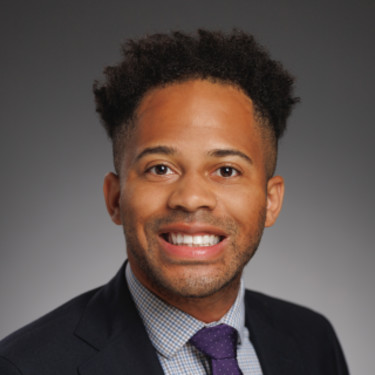Last spring, as I was ranking my preferences for my psychiatry rotation, I received an email notifying me that since I had never been assigned to an off-site rotation, I had to choose a location outside of New Haven — a matter of fairness for those who had already commuted. I ended up choosing Greenwich Hospital, a site that came with free accommodations.
For three weeks, I lived just an hour drive from New Haven — yet it felt like a completely different world. My apartment was very close to downtown Greenwich, and I found myself engaging in the art of wandering around like a tourist and people watching. Every morning before going to my rotation, I got coffee and watched people chatting and walking their dogs on sunny sidewalks.
I was assigned to the psychiatry consult-liaison service. One of the first consults I was involved in was regarding a patient in the late stages of dementia with Lewy bodies, who was experiencing confusion and agitation. As my attending spoke with the patient’s daughter, I looked around. The walls of the hospital itself were decorated with donated watercolor paintings depicting the French and Italian Rivieras, and in this patient’s room, beside the sheet of paper above his bed that read “No Haldol!” were pictures of him in prior years — surrounded by his wife, children, and grandchildren, seated on a manicured lawn. It was heartbreaking yet heartwarming — he was losing function, but he was supported and loved, his family at his side. I also attended a goals-of-care meeting for the same patient. His family and the medical team tearfully but attentively discussed what his wishes would have been and made plans for his final years, ensuring his comfort and dignity.
Another case also stood out — a young man brought to the behavioral health unit after a suicide attempt, experiencing psychosis and requiring inpatient rehabilitation. The young man sat in a dark room, tormented by hallucinations, his dilated pupils reflecting the sunlight streaming in from the window. As the light hit his face, he rapidly explained how he felt it was him against the world, and he was about to be harmed — a visceral moment that underscored the urgency of his care. His father, anxious but determined, insisted the team find a facility for him as soon as possible, assuring them that cost would not be an issue. The team then swiftly contacted the many suitable facilities located in relative proximity and by the end of the day found the young man a placement. Observing the care of both of these patients instilled in me how with an attentive and resourceful family and care team, management of complex patients could be much less daunting. It brought to my mind an elderly gentleman I had met during my internal medicine rotation on the geriatrics ward in the beginning of my clerkship year, who had been initially admitted with psychosis but remained admitted to the floor for months, awaiting court hearings and placement. I would see him walk the halls of the geriatric unit every day and wonder, would I have been able to wait this long? To feel stuck and live with such uncertainty? I had accepted that these unfortunate situations are inevitable. But I was starting to question that inevitability.
Later that summer, I returned to New Haven to rotate at the Connecticut Mental Health Center (CMHC), a state-operated inpatient facility that serves as a safety net for individuals with severe mental illness, primarily those from Greater New Haven. This facility is located in a neighborhood near downtown New Haven that is frequently mentioned in Yale Alerts, which notify university affiliates about police activity in nearby areas. The unit where I rotated housed nearly 15 patients. Each week, after interdisciplinary rounds, patients would queue to speak with the team in the meeting room. One of them was Ms. L, an elderly woman with schizoaffective disorder. It was well known to both her and the treatment team that her court-appointed conservator did not have her best interests in mind, particularly in the financial realm. She had tried to request a change, but her new conservator was closely associated with the previous one. Every week, she shuffled into the meeting room, gripping her walker, wearing the same worn dress. Her hands trembled — presumably the result of decades of potent antipsychotic medications — as she tearfully recounted her situation. With only a few thousand dollars to her name and no living family, she was utterly alone. The case managers and social workers relentlessly pushed through paperwork and Zoom calls, but there was little they could do. Just across the street, Yale New Haven Hospital operated on badge access and Epic, but at CMHC, it seemed little had changed since its opening in 1966. Patients stayed in a bleak unit, our team carried keys to the locked ward, and we wrote orders on paper forms and placed them in baskets — a reminder that we were in a different world, perhaps even a different time.
As medical students, we exist in a liminal space — we are not yet decision-makers, but we are present, observing the system without yet being fully absorbed by it. We are granted a perspective that is almost anthropological — we see not only patients’ clinical presentation but also their interactions with family and the strength (or absence) of their support systems. We learn of the neighborhood they live in and the settings where they seek care. We are taught about health care disparities through lectures and case discussions, but no classroom explanation truly prepares you for the experience of witnessing them firsthand.
Nowhere is this contrast more striking than in Connecticut, where some of the wealthiest communities in the country exist just a short drive from underfunded health care settings. My rotations were filled with these stark contrasts — debriding Fournier’s gangrene in a patient who couldn’t afford insulin and had become septic versus scrubbing in on elective procedures, observing seamless prenatal care in private clinics with well-established physician-patient relationships, and working in obstetric triage to coordinate as many essential prenatal tests as possible for an uninsured, unhoused mother in a single visit. I was surprised by how much my mental state reflected my clinical environment — an effortless sense of well-being in Greenwich, a quiet weight of reality in New Haven. Even outside the hospital, I found myself unconsciously absorbing the emotional tone of the spaces I worked in.
There are systemic challenges we cannot change overnight — deeply rooted disparities that leave marginalized and disadvantaged communities more vulnerable to poor health outcomes. As trainees, we often witness these inequities without the power to alter them in a meaningful way. Yet, experiencing health care in settings with abundant resources also highlights what is within our reach. While we may not be able to dismantle structural injustices alone, we can better and more precisely advocate for changes that elevate the healing environment — both for our patients and ourselves. Thoughtful design, better support systems, and small improvements in care coordination could ease the weight of illness, regardless of where treatment occurs. At the end of the day, pain, suffering, the sense of helplessness, and being misunderstood is inherent to disease — the latter especially prominent in psychiatric conditions — but an hour’s drive can dictate the comfort and agency the patient has in their care. In witnessing these markedly different environments, we are not only confronted with what is broken but also inspired by what is possible.
What contrasts have you witnessed in your training? Share in the comments.
Helia is a third-year medical student at Yale School of Medicine. When not learning medicine, she can be found sketching, collecting rare books, and bouldering. She is a 2024–2025 Doximity Op-Med Fellow.
Patient name and identifying details have been changed.
Collage by Olga Strelnikova / Tanya St / Getty







